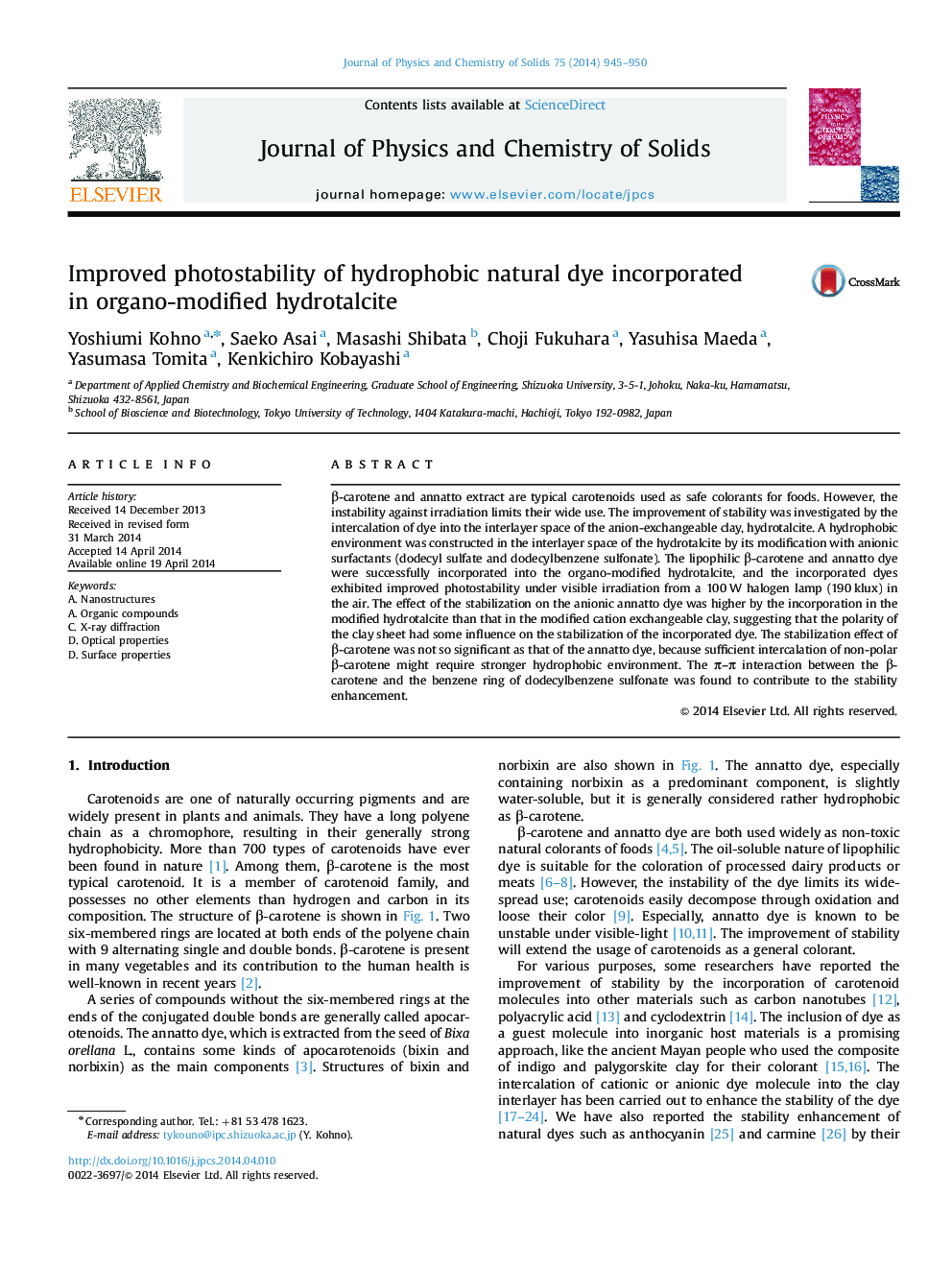| Article ID | Journal | Published Year | Pages | File Type |
|---|---|---|---|---|
| 1515734 | Journal of Physics and Chemistry of Solids | 2014 | 6 Pages |
•Hydrophobic carotenoids are intercalated in an organo-modified hydrotalcite interlayer.•The intercalated carotenoid exhibits improved stability against visible light.•Anionic dye tends to be stabilized by the organo-modified anion-exchangeable clay.
β-carotene and annatto extract are typical carotenoids used as safe colorants for foods. However, the instability against irradiation limits their wide use. The improvement of stability was investigated by the intercalation of dye into the interlayer space of the anion-exchangeable clay, hydrotalcite. A hydrophobic environment was constructed in the interlayer space of the hydrotalcite by its modification with anionic surfactants (dodecyl sulfate and dodecylbenzene sulfonate). The lipophilic β-carotene and annatto dye were successfully incorporated into the organo-modified hydrotalcite, and the incorporated dyes exhibited improved photostability under visible irradiation from a 100 W halogen lamp (190 klux) in the air. The effect of the stabilization on the anionic annatto dye was higher by the incorporation in the modified hydrotalcite than that in the modified cation exchangeable clay, suggesting that the polarity of the clay sheet had some influence on the stabilization of the incorporated dye. The stabilization effect of β-carotene was not so significant as that of the annatto dye, because sufficient intercalation of non-polar β-carotene might require stronger hydrophobic environment. The π–π interaction between the β-carotene and the benzene ring of dodecylbenzene sulfonate was found to contribute to the stability enhancement.
Graphical abstractFigure optionsDownload full-size imageDownload as PowerPoint slide
